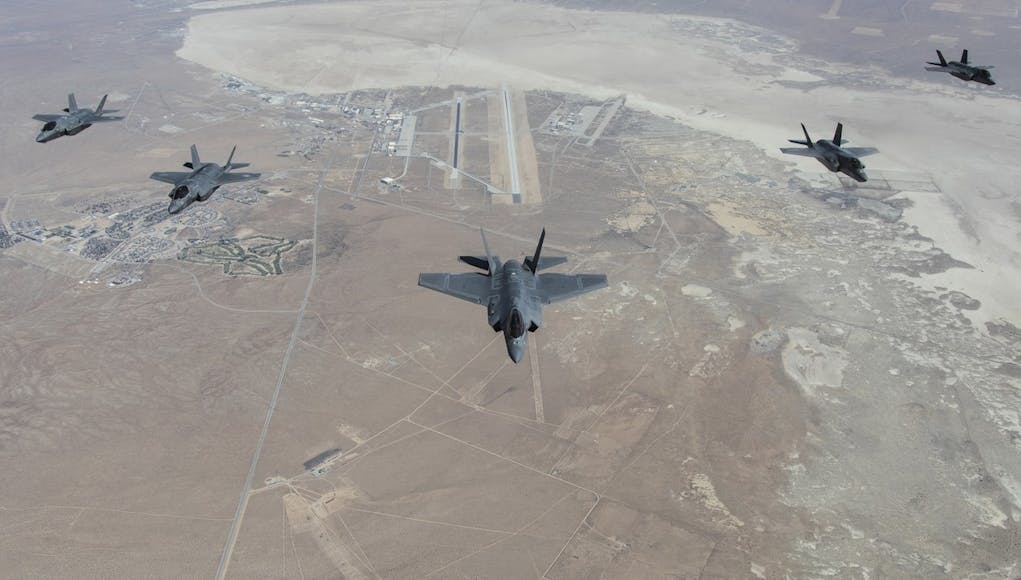The Joint Strike Fighter Integrated Test Force have tested 11 unique F-35 software suites.
In 2019, as part of the Auto Ground Collision Avoidance System team, the ITF won the coveted Collier Trophy for “for the greatest achievement in aeronautics or astronautics in America.”
In the letter below, ITF leadership reflects on the historical and strategic significance of the team’s accomplishments throughout 2019.
“Over the past year we have tested 11 unique F-35 software suites and fielded two. Through those efforts, we have laid the foundation for increased F-35 lethality and survivability with functions like multi-ship Infrared Search and Track. We have advanced strategic capabilities like Dual-Capable Aircraft and large rocket observation missions. We have expanded the flight envelope for KC-46 air-to-air refueling, enabling extended missions with America’s most advanced tanker.
And we have done all these things by constructing a partnership of Joint, Operational and Developmental Test units around the nation. The Integrated Test Team that we envisioned and lead has become the standard for fighter test everywhere, producing strategically relevant capabilities at a four-fold rate compared to legacy fighters.
These accomplishments are in many ways quite remote from those of our predecessors over eight decades ago. Yet our most important contribution this year brings us full circle to our namesake. As the fastest fighter of its time, the P-38 took its developers into transonic and supersonic regimes that were not yet well understood. Consequently, the P-38 suffered from a tendency to tuck under at high speeds, leading to steep fast dives that were difficult or impossible to recover from. In 1941, Lockheed test pilot Ralph Virden lost his life while trying to recover his P-38 from just such a dive. A number of P-38s were lost in test and in combat due to this phenomenon, and P-38 pilots’ reluctance to enter dives gave enemy pilots a distinct survivability advantage. “














What anti-ship missiles will fit inside the F35 bays and how many?
The ability to track hypersonic missiles would clearly be an advantage!
Russia’s Vladimir Putin oversees hypersonic missile test near Crimea
By Darya Tarasova, Zahra Ullah and Jack Guy, CNN
Updated 1400 GMT (2200 HKT) January 9, 2020
https://edition.cnn.com/2020/01/09/europe/russia-putin-hypersonic-missile-test-intl/index.html
The Kongsberg NSM/JSM is made to fit in the F35 bays.
This is already being considered by the MoD as an interim replacement for Harpoon, I believe. Ability to fit in the F-35 weapon bay may be seen as an advantage?
There’s also JASSM/-ER as a future Harpoon variant, plus the near-future SCALP/Stormshadow replacement (which obviously has to be underwing).
Hypersonic ALCM/ASMs are too far away to be a viable system, since ships are mobile and will be hidden in the clutter (littorals/goplats/merchants) anyway.
I think SDBs/SPEAR variants may actually be an interesting alternative – a swarm of these precision wpns could be more effective than 1 ALCM.
What happened to the Perseus Missile which could be one Missile or three as it carry’s two smaller Missiles internally. A 200kg main warhead with an additional 2 x 40–50kg inertially guided effectors from lateral bays. This is a Missile with an in service date of 2030.